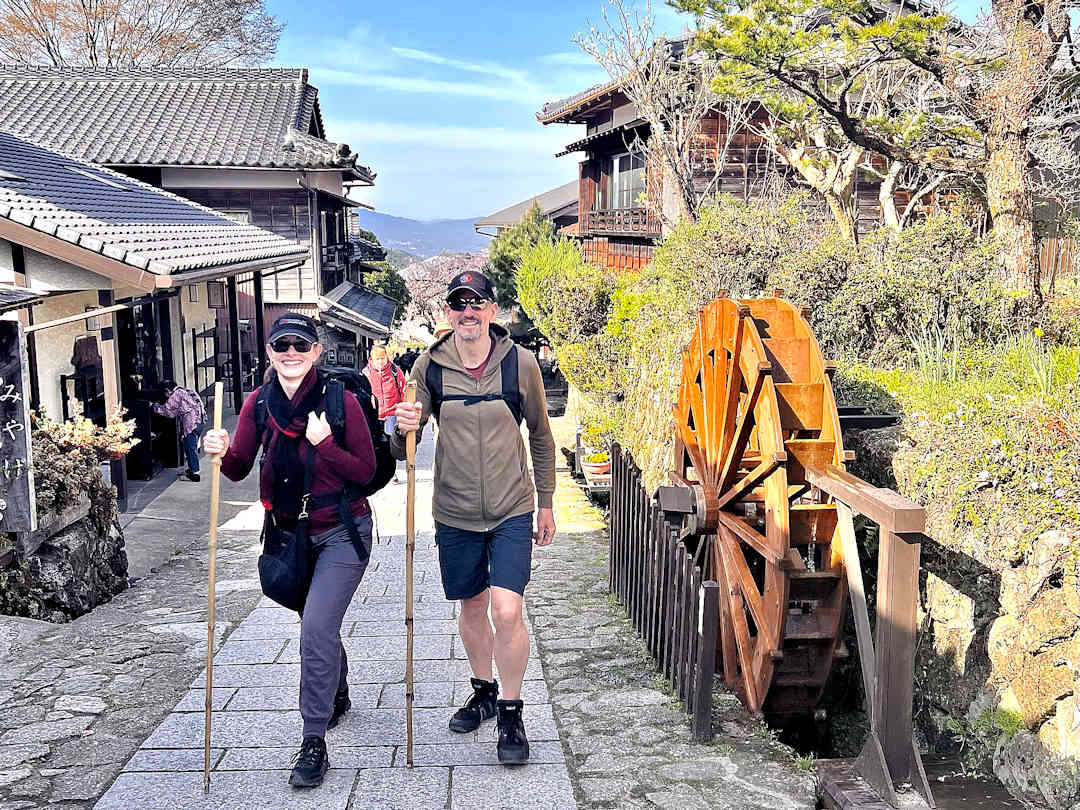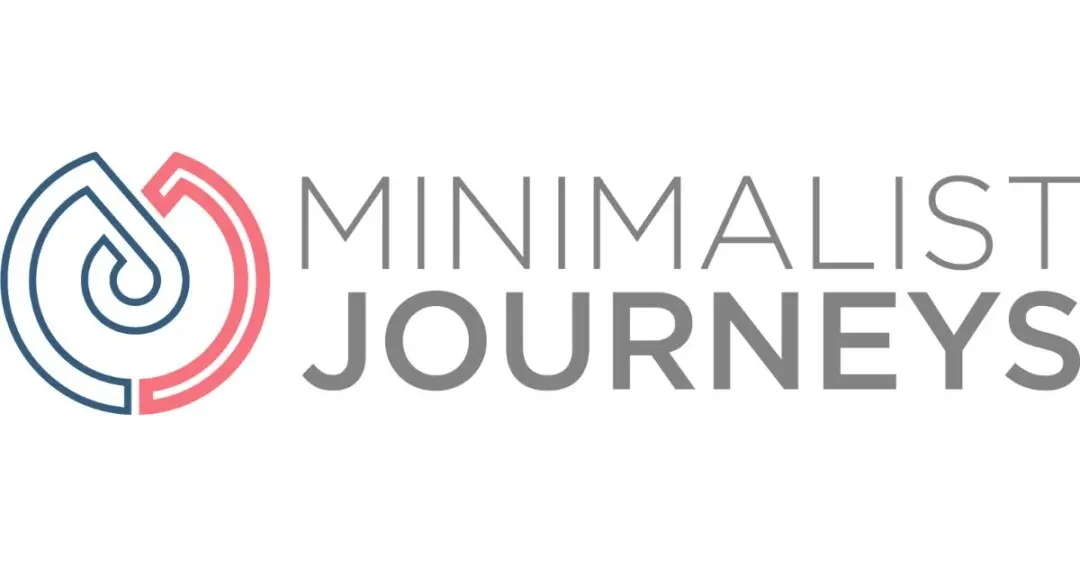This article may contain links to products and services we use and recommend. We may receive compensation when you click on links to those products. For more information, see our Disclosure Policy.
Are you looking for a (multi)day hike away from Japan’s busy cities? The historic Nakasendo offers a unique journey through Japan’s fascinating past and picturesque landscapes. Our in-depth travel guide has all the information needed to create your unforgettable hiking adventure. You may even encounter Japanese macaques on the trail if you’re lucky.
Are you planning your Nakasendo Hike at the last minute?
Book your transportation to/from the Nakasendo Trail, keeping your carbon footprint in mind:
Find your perfect accommodation along the Nakasendo Trail with Booking.com. We recommend these traditional, small-scale and centrally located options near public transport:
Explore the wonders of the Nakasendo and beyond with the best tours and activities powered by GetYourGuide, Klook and Viator. We recommend these sustainable options with local providers:
We use and recommend Airalo eSIMs for affordable, hassle-free internet access in 200+ destinations. Activate before you arrive and get online instantly.
What is the Nakasendo?
The Nakasendo (meaning Central Mountain Route) is one of five trade routes of the Edo period (1603-1867) and one of two that connected Kyoto (the Imperial capital) and Edo – now Tokyo (the seat of the military ruler of the time, also known as the Shōgun).
Back in its heydays, travellers along the Nakasendo would use the tea houses (chayas) in the 69 postal towns (jukus or shukus) as rest stops on their long and arduous journey. While the Edo period was a time of relative peace (after centuries of civil war), the postal towns had defence structures like right-angled streets that would slow down potential attackers, thus providing a haven for tired travellers.
Modern-day visitors to Japan follow in the footsteps of those who travelled the route centuries ago as they hike over dramatic mountain passes and through picturesque river valleys, experience the warm hospitality of traditional inns, and sample delicious local cuisine in historic postal towns.
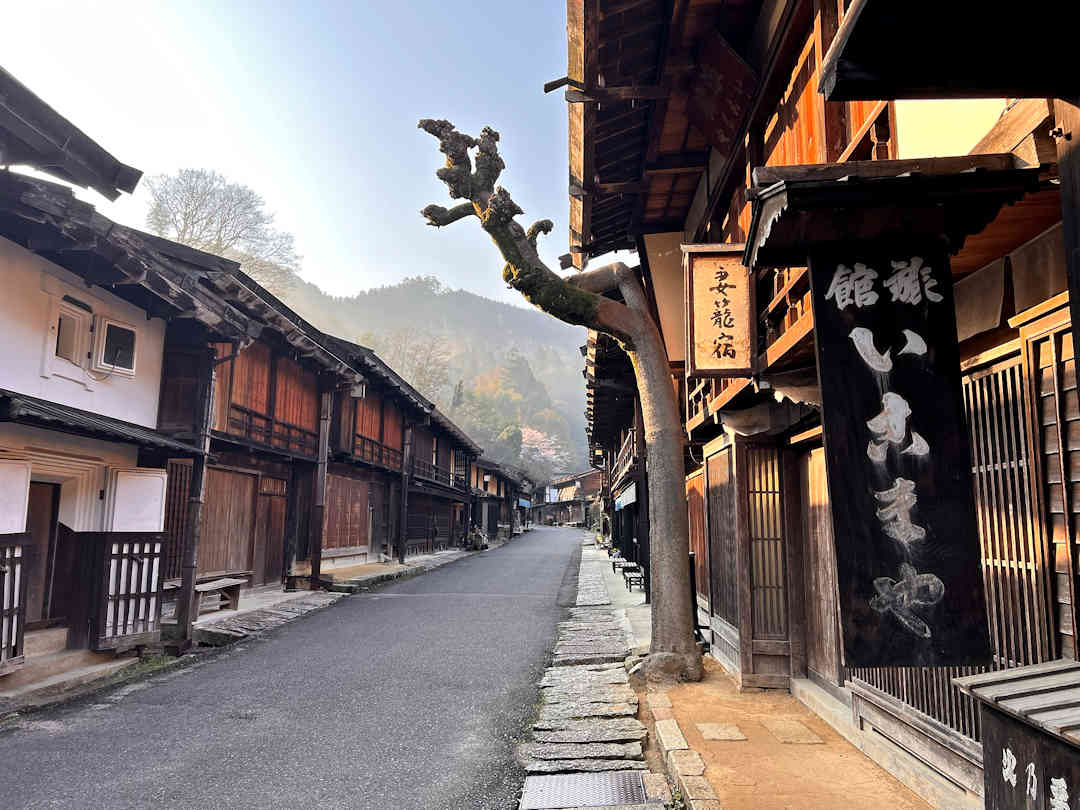
The Nakasendo is a historic trade route with 69 postal towns between Kyoto and Tokyo | Image courtesy of Jennie Ryken
How long does it take to hike the Nakasendo?
The two endpoints of the Nakasendo are Sanjō-ōhashi (Sanjō Bridge) in Kyoto and Nihon-bashi (Bridge of Japan) in Tokyo. The Nakasendo spans over 530 kilometres and traverses seven prefectures (Kyoto, Shiga, Gifu, Nagano, Gunma, Saitama and Tokyo).
Hiking the entire length of the Nakasendo could be done in 22 days, with an average of 25 kilometres per day. However, due to time constraints, hiking the complete Nakasendo is not a feasible option for most travellers, nor is it recommended, as many sections of the historic trail have been absorbed by busy highways and ever-growing cities.
Instead, most hikers tackle specific sections of the trail as a (multi)day hike, focusing on the most scenic or historically significant sections. Recognised as a National Historic Site of Japan, the best-preserved sections of the Nakasendo can be found:
- between Wada-tōge and Wada-shaku (Nagano Prefecture),
- between Midono-juku and Shiojiri-juku (Nagano Prefecture), and
- between Magome-juku and Tsumago-juku (Gifu/Nagano Prefecture).
This guide and our itinerary suggestions will focus on the latter two segments – between Nakatsugawa-juku (postal town number 45) and Narai-juku (postal town number 34).
Map of Accommodation, Points of Interest, Eateries and Transport
Below is a map of the recommended accommodations, points of interest, eateries, and transport terminals or stops mentioned in this article.
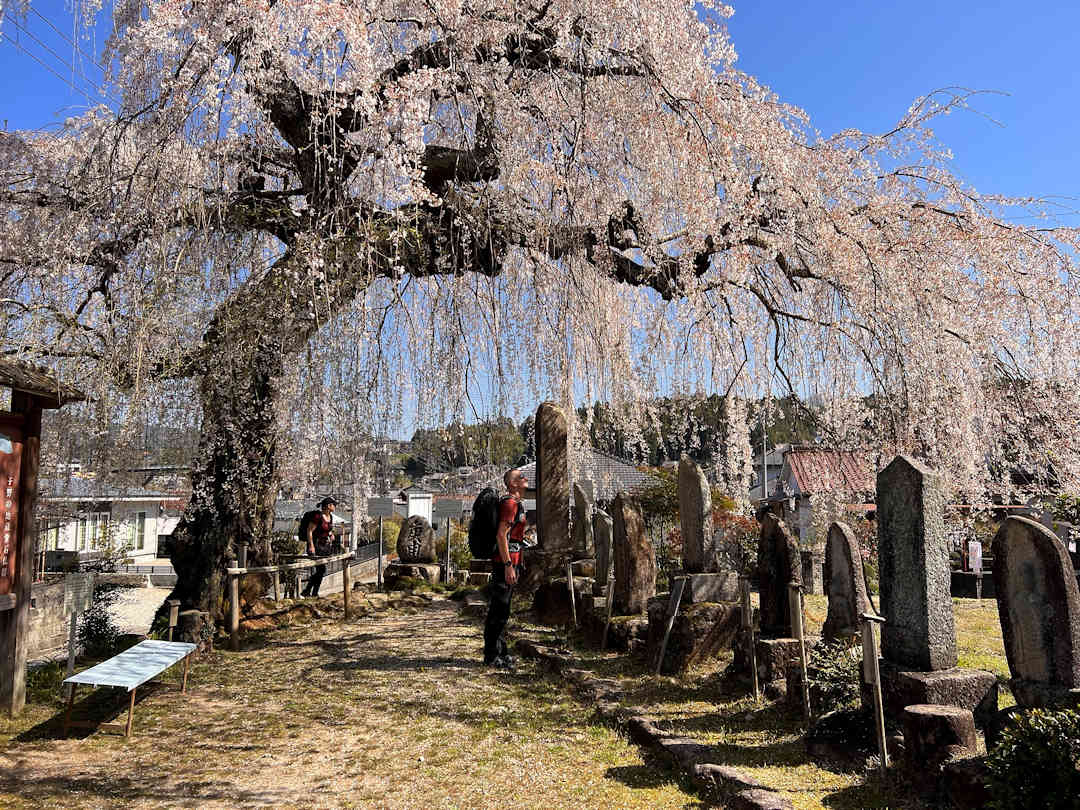
How does the Nakasendo compare with the Kumano Kodo?
If you’re wondering whether to hike the Nakasendo OR the Kumano Kodo (or both), here are some points that might help you decide.
Infrastructure
The first (and significant) difference between both trails is age: The Kumano Kodo is an ancient pilgrimage route for over 1,000 years. The Nakasendo, while historically important as an old trade route, is much younger. As such, infrastructure along the Nakasendo is more developed. Thanks to the preservation of the postal towns, which provide accommodation, food and dining options (and even public toilets) at regular intervals, hikers find more amenities on the Nakasendo (than on most of the Kumano Kodo routes).
Both trails are well-signposted and promoted by their respective tourism bodies.
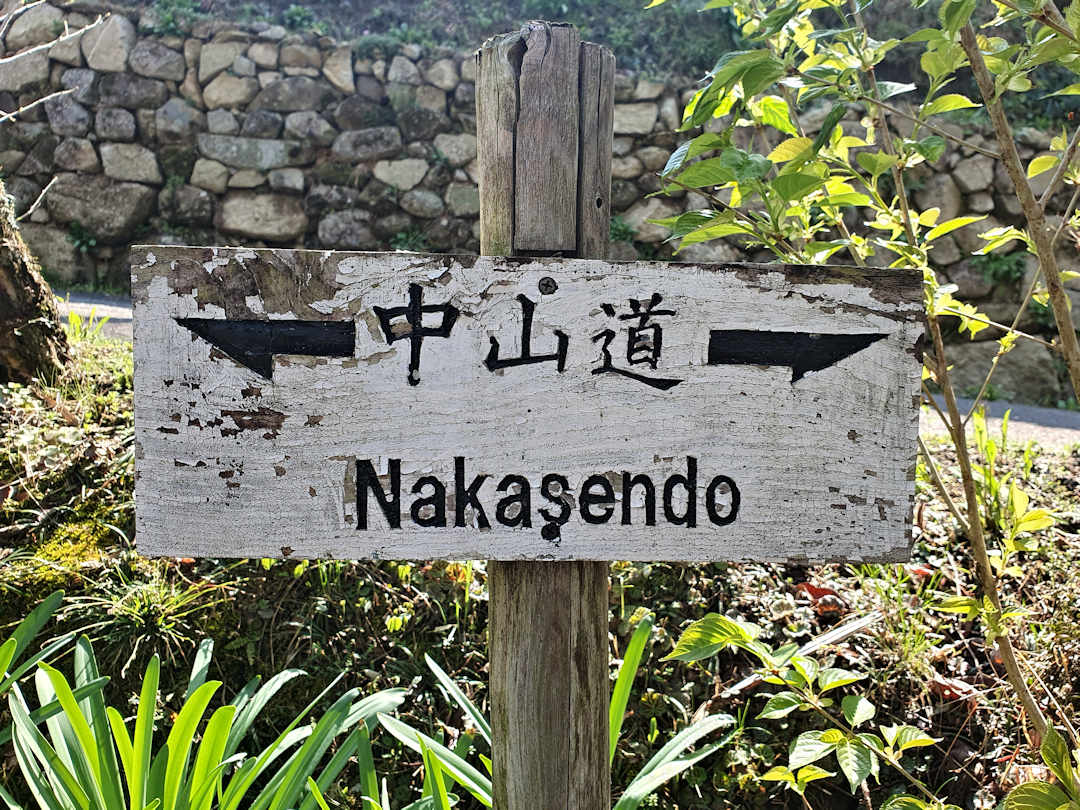
Like the Kumano Kodo, the Nakasendo trails are well sign-posted and promoted by the local Tourism Boards
Terrain and Access
Given its function as an old trade route, the Nakasendo is also easier and more accessible than many Kumano Kodo routes. The trail is less steep and features more paved roads and fewer moss-covered stone paths than most of the Kumano Kodo routes, making walking more comfortable (especially if you have knee issues).
Public transport access is similarly well established for both; however, the Nakasendo is less remote than most Kumano Kodo routes (more below).
Wildlife
Bear encounters are possible on the Nakasendo and Kumano Kodo, though they are more likely on the remote Kumano Kodo mountain routes than on the Nakasendo.
While Japanese macaques also live in the Kii Mountains, we only encountered them (twice) on the Nakasendo (on the outskirts of Nagiso coming from Tsumago and between the Torii Pass and Narai).
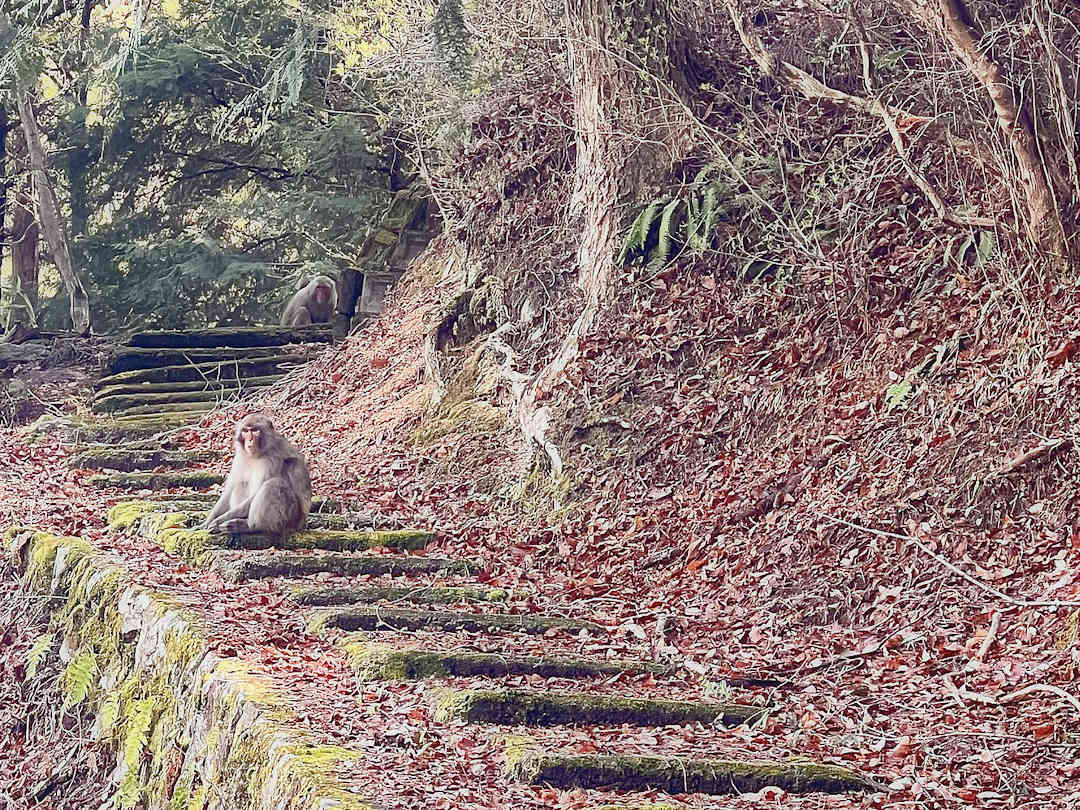
Keep an eye out for Japanese macaques - we encountered them twice on the Nakasendo | Image courtesy of Jennie Ryken
When is the best time to hike the Nakasendo?
The Nakasendo can be hiked all year round, but the best seasons are Spring (March to May) and Autumn/Fall (mid-September, through October and November, and into early December). In Spring, hikers can witness flowers and trees blooming, adding a touch of colour and beauty to the trail. In Autumn/Fall, as the foliage changes, vibrant red, orange and yellow hues paint the landscape.
Winter (early to mid-December until the middle of March) sees shorter days and the possibility of snow covering the trail, making the mountain passes incredibly slippery and challenging to navigate. Summer (June to August) is typhoon season, with hot, humid and rainy days making hiking the Nakasendo less enjoyable. Summer also means some nasty critters are way more active (more on that below).
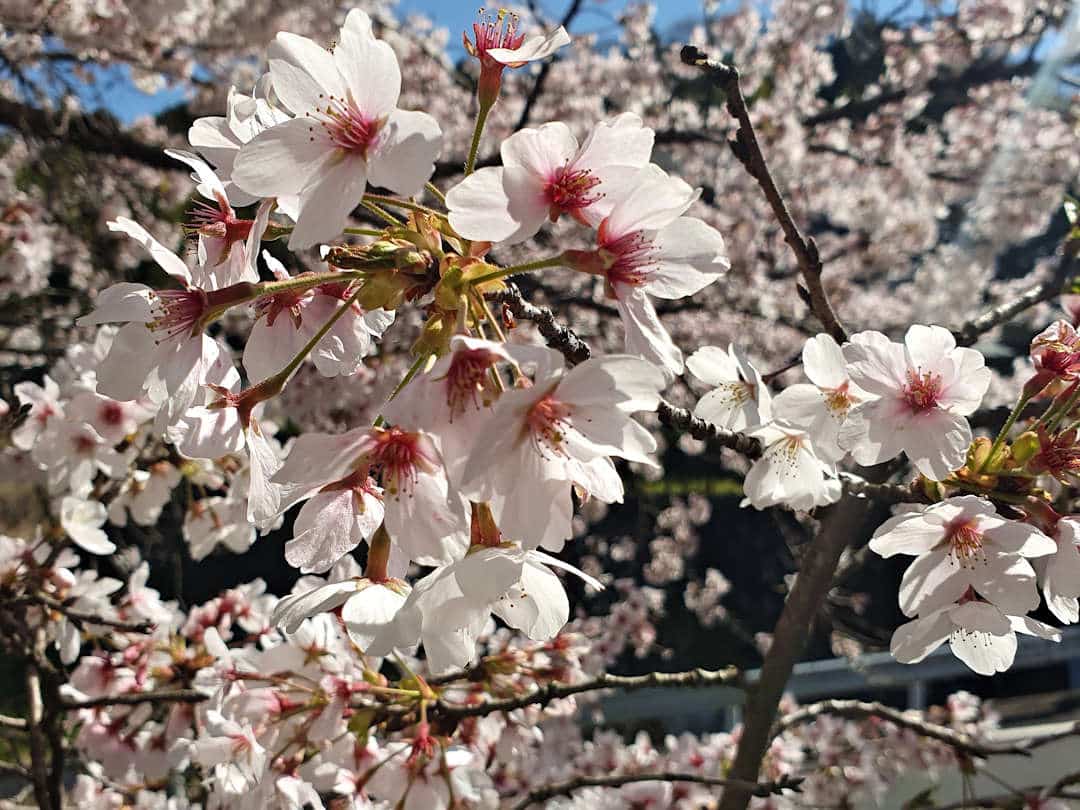
Spring is an excellent time to hike the Nakasendo - you might even experience the cherry trees blooming
How do you get to the Nakasendo, and how do you get around?
Getting to the Nakasendo
Getting to the Nakasendo is relatively easy, thanks to Japan’s convenient public transportation network.
The best vantage points for our Nakasendo itineraries are Nakatsugawa [Google Maps location] in Gifu Prefecture and Kiso-Fukushima [Google Maps location] in Nagano Prefecture. Both towns are located on the train line between Nagoya and Matsumoto: Chuo local trains stop at all stations, while Shinano Limited Express trains only stop at Nakatsugawa, Nagiso, Agematsu and Kiso-Fukushima. Check out the JR train schedule for the Nakasendo.
Nakatsugawa will also be a stop on the future Chūō Shinkansen Maglev train line between Tokyo and Nagoya, making the Nakasendo even more accessible when it opens.
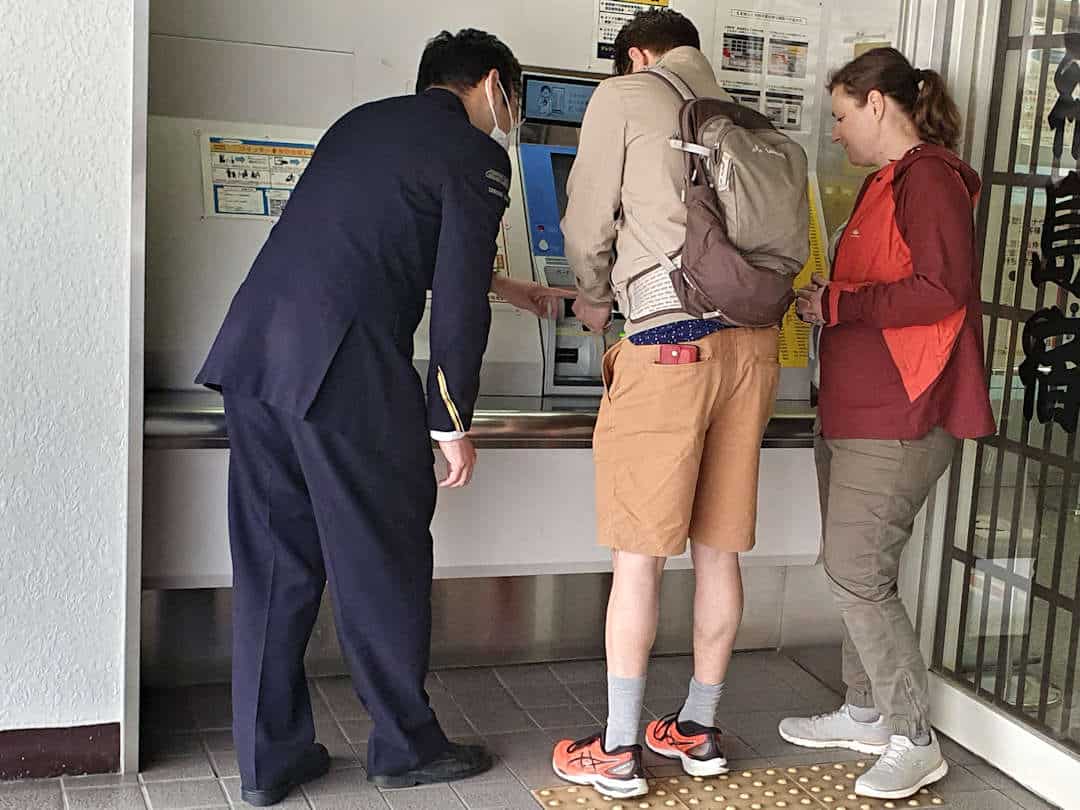
Nakatsugawa (in Gifu Prefecture) and Kiso-Fukushima (in Nagano Prefecture) are the best vantage points on the train line between Nagoya and Matsumoto
How to find the best deals on rental cars
Most of the time, we use public transport to get us around. But occasionally, hiring a car or scooter just makes it easier or gets us to places we couldn't go without a set of wheels. Whenever we do hire a vehicle, our first point of call are local rental providers. A quick Google Maps search shows who's near us. We then check the reviews and only contact those other travellers had good experiences with.
If we can't find anyone we're comfortable with, we search for deals on aggregator websites. We've used Rentalcars.com and DiscoverCars.com in the past and had only good experiences with them. Both partner with trusted brands like Hertz, Avis, Budget or Europcar (and in some locations even local providers) - so you can compare car hire options in a similar way you'd compare accommodation offers across Agoda and Booking.com.
Getting around the Nakasendo
Most postal towns on our itineraries are located along the train line and can be reached by train.
The exceptions are Magome [Google Maps location] and Tsumago [Google Maps location], which (unless you are hiking to and between them) require taking a bus from their respective nearest train station:
- Bus from Nagiso to Tsumago and Magome: Route map, Timetable
- Bus from Nakatsugawa (中津川) to Magome (馬籠): Timetable
Check the timetable as trains and buses are not as frequent as you may be used to from where you live.
Train tickets can be purchased at the stations (either in person or via a machine) and in cash on the train (remember to pull a ticket when you get on). You can also use your JR Pass on the trains—just show it to the station staff/train driver as needed.
To use the bus, pull a ticket as you enter the bus. Then pay the (correct) fare based on the number on your ticket when you exit. If you don’t have the correct fare, use the change machine by the driver before you pay.
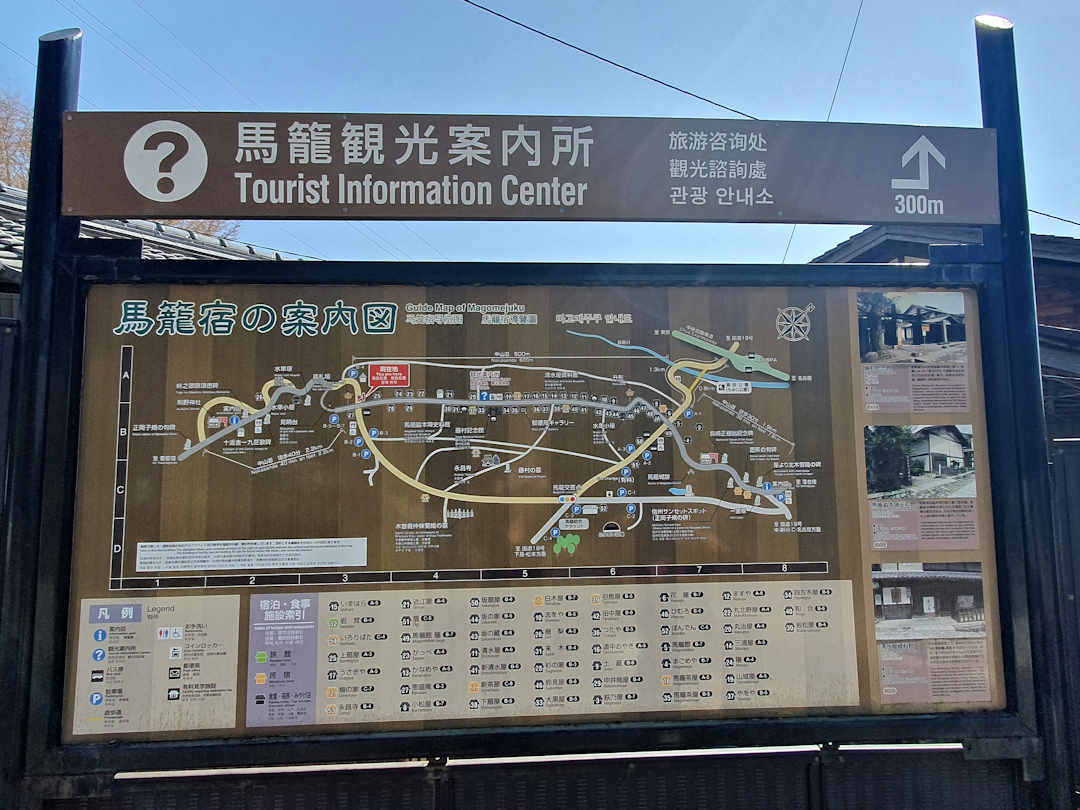
Magome and Tsumago can only be reached on foot or by taking the bus from Nakatsugawa or Nagiso train stations
Where do you stay, and how do you book accommodation in Nakasendo?
Where to stay on the Nakasendo will depend on
- whether you hike (sections of) the Nakasendo point-to-point or from a central base,
- what time of the year you visit, as well as
- your budget.
There are various accommodation options along the Nakasendo, including traditional Japanese inns and modern business hotels.
It is recommended that you book your accommodation in advance, especially if you plan to stay in popular towns like Magome, Tsumago, or Narai. Availability in these postal towns is limited, and spots fill up quickly, especially during busier periods. So, securing your reservation well ahead of time is important. Do note, however, that some Japanese accommodations only accept bookings three months in advance.
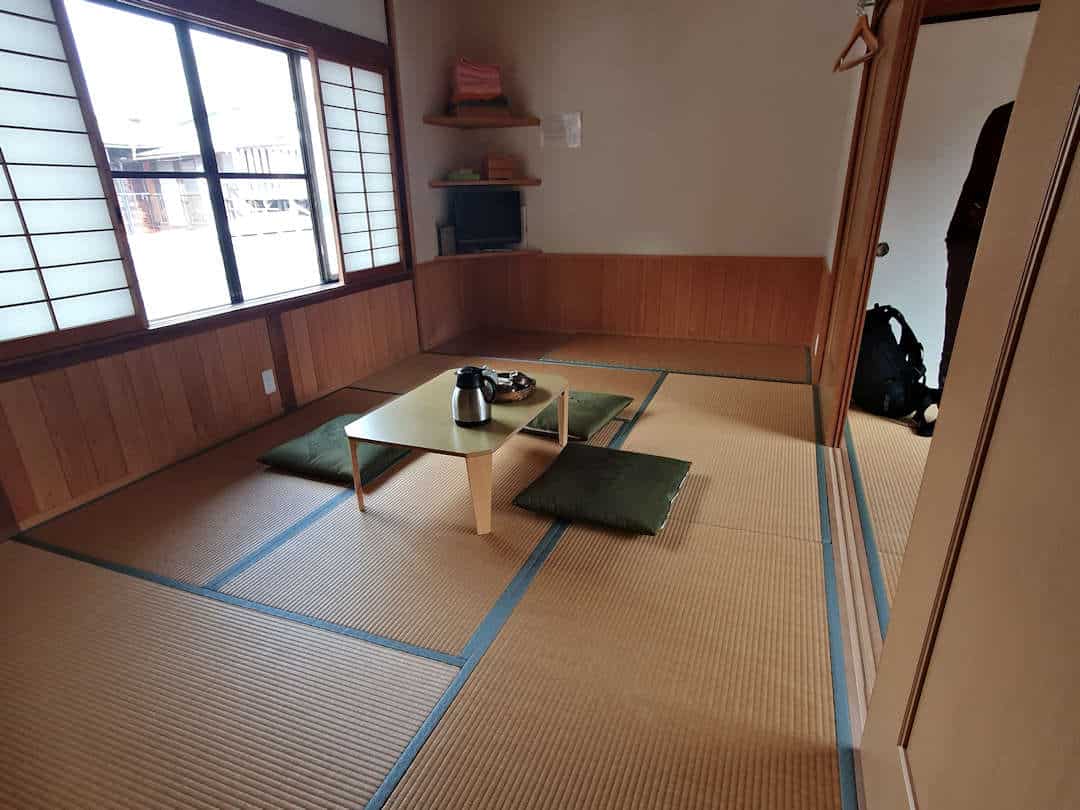
Accommodation options in Magome, Tsumago or Narai are very limited and advance booking is highly recommended
As most accommodation options in those historic postal towns are traditional, family-owned guesthouses, you won’t find much English being spoken. If you don’t speak Japanese, we recommend to
- Check our recommendations below (and other options offered on popular booking websites like Agoda and Booking.com);
- If they don’t suit, browse Google Maps and contact inns using the email address listed (leveraging Google Translate to make your booking inquiry in Japanese) and
- If all else fails, contact the local tourism office (pj.en.osik.uj@osigan) for assistance in booking (this is how we secured our accommodation in Tsumago). Note that they are NOT a booking agency, so please ask nicely.
For easy reference, here are our accommodation recommendations for the Nakasendo:
| Name | Property Features | Location | Type | Price Indicator | Book Now |
|---|---|---|---|---|---|
| Onyado Tsutaya | Family-friendly facilities | Kiso-Fukushima | Ryokan | $$ | Book Now |
| Kiso Mikawaya | Modern hotel Large Onsen | Kiso-Fukushima | Hotel | $$ | Book Now |
| Magome Chaya | Traditional house, with amazing meals | Magome | Guesthouse | $$ | Book Now |
| Guesthouse Nedoko | Magome | Guesthouse | $$ | Book Now | |
| 3 min Nagiso Street | Entire house: 2 bedrooms, 1 bathroom | Nagiso | House | $$ | Book Now |
| Guesthouse Tenman-ya | Family room for maximum of 12, renovated traditional house | Nakatsugawa | Guesthouse | $ | Book Now |
| Onn Nakatsugawa | Double and Twin rooms, good breakfast | Nakatsugawa | Guesthouse | $ | Book Now |
| Shimosagaya | Traditional house, with amazing meals | Tsumago | Guesthouse | $$ | Book Now |
What about food (and water) on the Nakasendo?
With postal towns (and thus shops and restaurants) evenly spaced out, there is no need to carry more food and water than required for the day. Between Magome and Tsumago, a tea house also offers freshly brewed tea and lollies free of charge (though a small donation is appreciated).
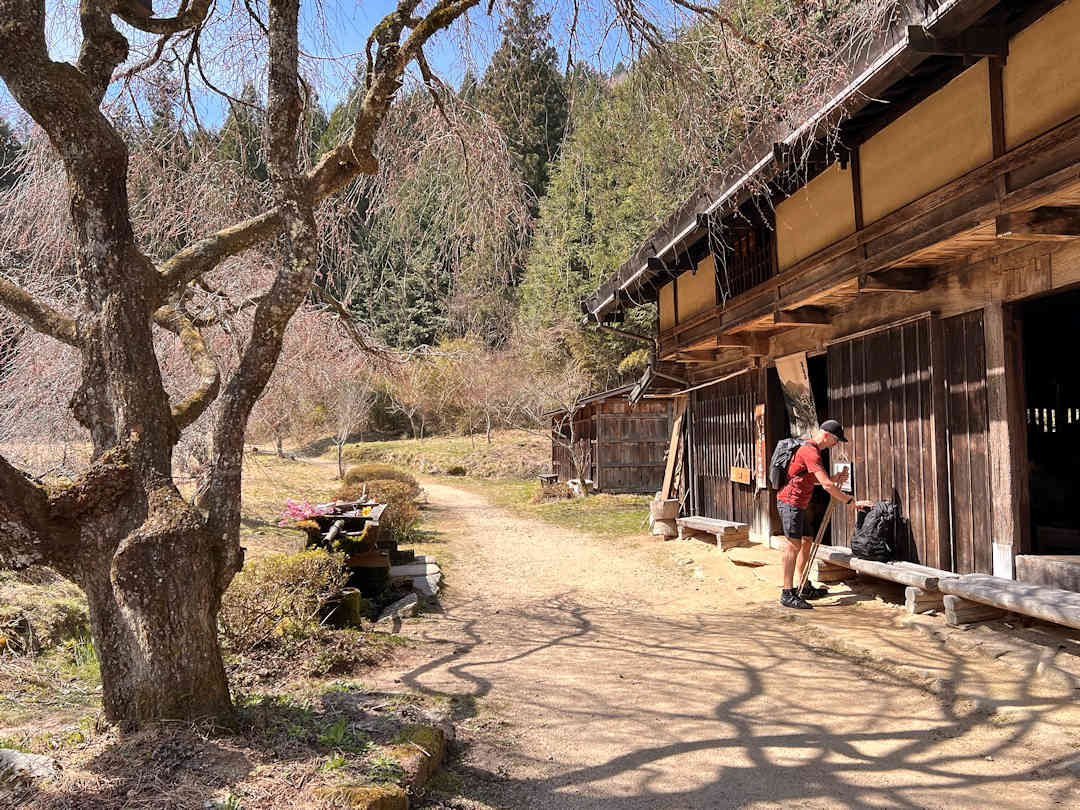
A tea house between Magome and Tsumago offers freshly brewed tea and lollies for tired travellers | Image courtesy of Jennie Ryken
Is it worth getting a meal plan on the Nakasendo?
We opted for the meal plan when staying in Magome (at Magome Chaya) and in Tsumago (at Shimosagaya), as we had heard that all eateries close between 1600h and 1700h. This may be true for Tsumago. However, in Magome and Narai, there are dining options that are open longer, including:
- Soba Restaurant Mikazukian [Google Maps location], a soba restaurant two doors down from Magome Chaya, is open at night (except Tuesdays).
- Haginoya [Google Maps location] is a Kaiseki restaurant at the entrance of Magome from Nakatsugawa. It is also open at night.
- Kanameya [Google Maps location] in Narai opposite the Kami-Toiya Museum is open daily for dinner.
Nakatsugawa and Kiso-Fukushima are larger towns with several dining options.
That said, meal plans are a great choice even when other dining options are available. They are always substantial—great after a long day of hiking—and allow hikers to experience local specialities and flavours in a relaxed atmosphere. So far, all meal plans we’ve had in Japan were a feast for the eyes and our taste buds.
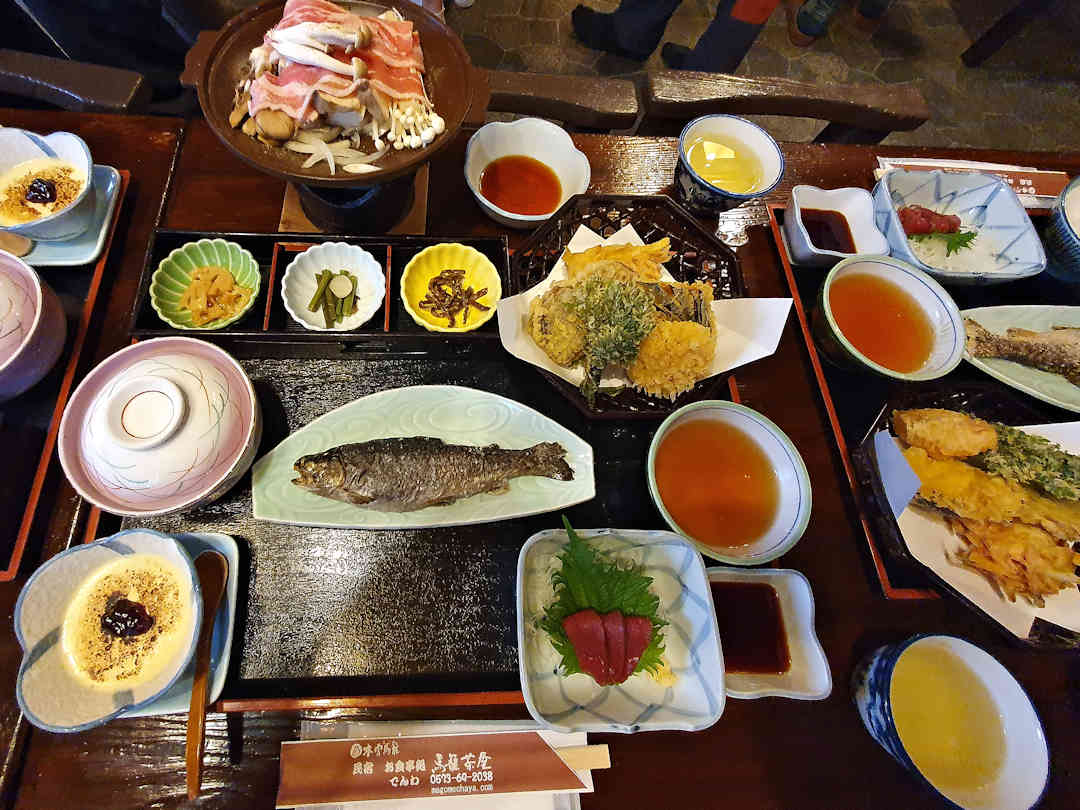
Meal plans are a great choice on the Nakasendo - they are always substantial and a wonderful way to experience local specialties and flavours
Where do you eat along the Nakasendo (if you don't have a meal plan)?
You won't go hungry on the Nakasendo, even without a meal plan. Here are some of the places we checked out and can recommend:
- Nakatsugawa: Tocoro Burger [Google Maps location] for lunch/dinner
- Magome: Marujiya [Google Maps location] for lunch
- Tsumago: Café Shirokiya [Google Maps location] for lunch OR coffee and cake
- Nagiso: Café Izumiya [Google Maps location] (for coffee and cake) - opposite the train station
- Nojiri: Café Yamazato (for coffee and cake - their baked cheesecake is divine) - look out for the narrow set of stairs in between the buildings opposite the train station
- Kiso-Fukushima: Café SOMA [Google Maps location] for lunch | Izakaya Chikara for dinner (the food and drinks are delicious, Masa speaks excellent English, and Yoko showers you with love)
- Narai: Café Matsuyasabō [Google Maps location] for coffee and cake
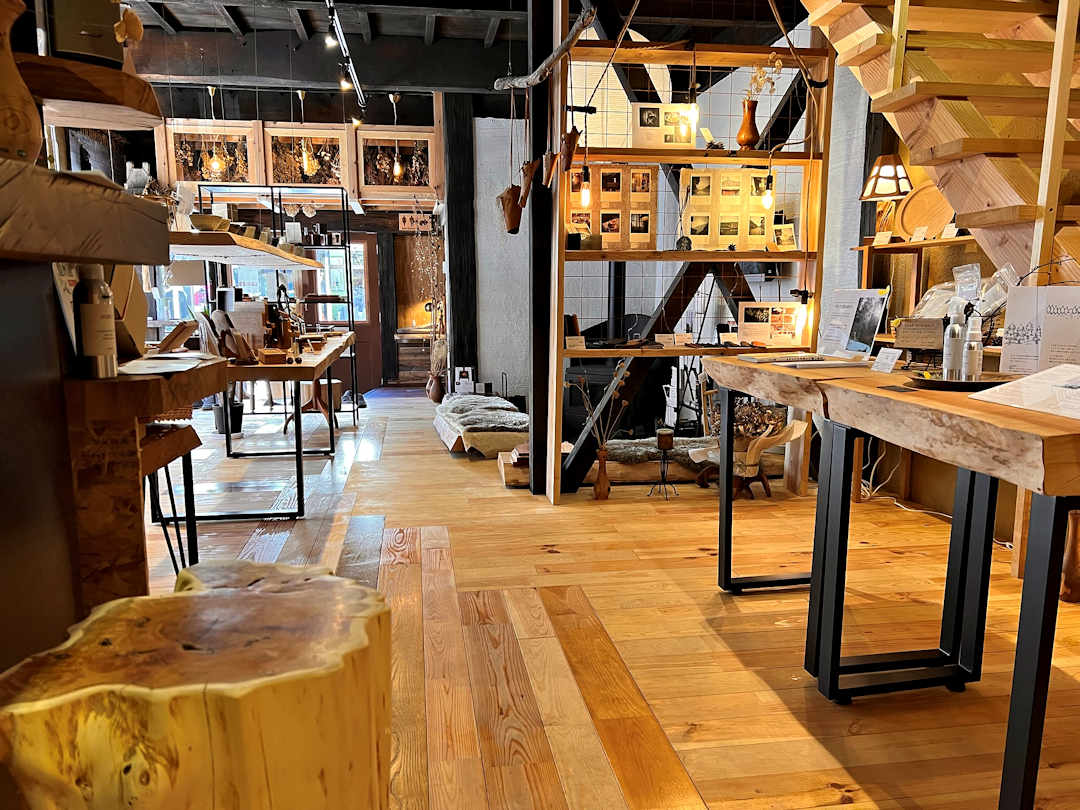
Café SOMA in Kiso-Fukushima doesn't only serve delicious food, it is also a gallery showcasing local craftsmenship | Image courtesy of Jennie Ryken
What else is there to see and do on the Nakasendo?
While hiking the Nakasendo is a highlight of any visit to the region, there are also several other activities and attractions to enjoy along the way. Here are our suggestions.
Miso and/or Sake Tasting
Nagano Prefecture produces almost 50% of Japan’s miso, so why not try some miso while in the region? Koike Koji [Google Maps location] in Kiso-Fukushima was recommended by a local (open daily from 09:00 to 18:00).
While in Kiso-Fukushima, we also tasted sake from a local brewery, Nakazen Sake Brewery [Official website, Google Maps location], which was delicious. Make sure you visit them (they are open daily from 09:00 to 17:00).
Traditional Handicraft
If you are after locally produced souvenirs, apart from sake or miso, here are some other suggestions:
- Narai is known for Magemono, a lightweight wooden container made from thin sheets of various local types of wood. Magemonos have been made in Narai for over 400 years and make great lunchboxes for hikes. Check out Hananoya [Official website, Google Maps location], a family-owned business with two stores in Narai.
- Kiso-Hiragawa is synonymous with Kiso Shikki (Japanese lacquerware made in the Kiso Valley). Even the medals from the 1998 Olympic Games in Nagano were made from Kiso Shikki. There are 150 Shikki companies in and around Kiso-Hiragawa employing over 700 people. The products are sold in small shops all over town.
- Or buy a wooden comb (Orokugushi) hand-made in Yabuhara from Japanese Green Alder, a 300-year-old tradition. There is a small workshop beside the railway line, about 400 metres past the Nakasendo turn-off that takes you below the railway line and into the mountains.
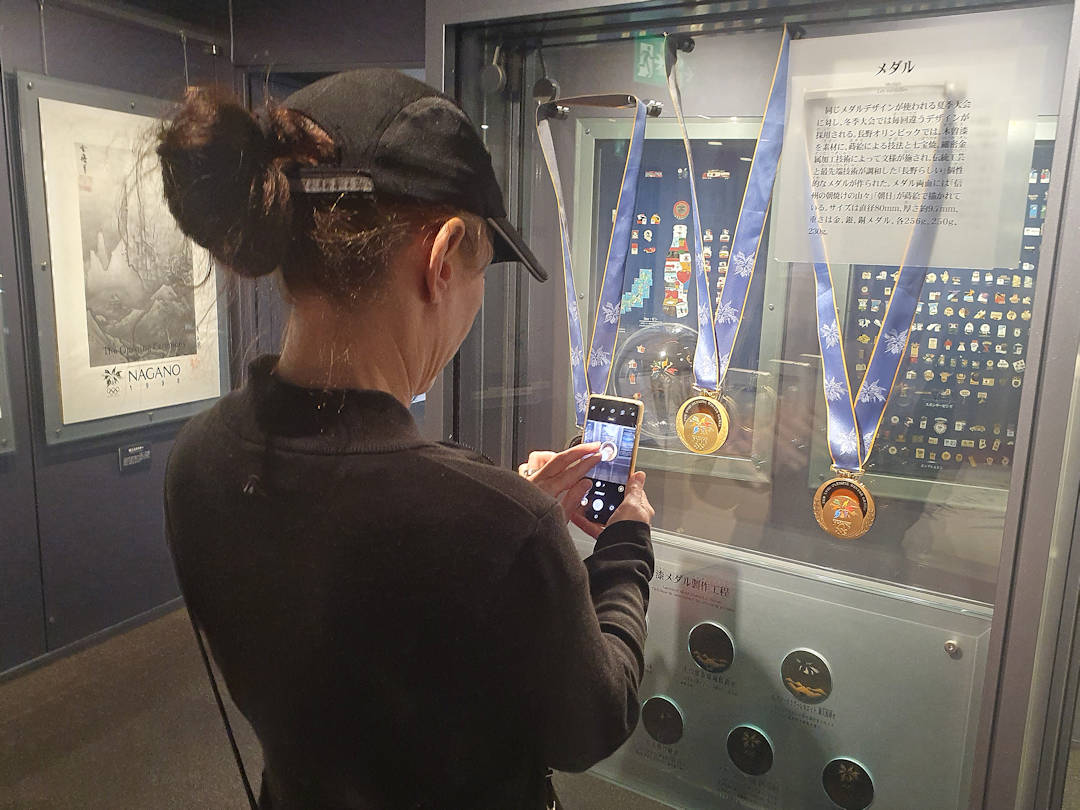
Did you know that the medals of the 1998 Olympic Games in Nagano were made from Kiso Shikki (Japanese lacquerware made in the Kiso Valley)?
What to pack for the Nakasendo?
Hiking through the forests and over mountain passes on the Nakasendo means you will want to pack as light as possible (if you carry your gear yourself). Japanese Inns generally provide shower gel, shampoo, towels, slippers and even a yukata (a traditional robe worn around the house). So you do not need to carry any of those items.
Before we headed to the Nakasendo, we reduced our two carry-on travel packs down to one:
- We hiked with Sandra’s half-full travel pack and our daypack.
- We forwarded Paul’s travel pack with the items we did not need for the hike, paying JPY1,620 to send it from Daikoku Locker [Official website, Google Maps location] in Osaka to Yamato Shinshudaigaku-Mae Center [Google Maps location] in Matsumoto.
Whether you carry a full pack or a daypack, and no matter when you do your hike, here are some essentials we always recommend packing:
- Hiking gear: Bring sturdy and comfortable hiking boots or trail shoes, moisture-wicking socks and breathable clothing suitable for layering.
- Rain gear: Pack a lightweight and waterproof jacket or poncho.
- Water and snacks: Bring a water bottle to stay hydrated and snacks for your hike.
- First aid kit: Include basic items like band-aids, pain relievers and prescription medications.
- Other: Bring a power bank for your phone or other electronic devices.
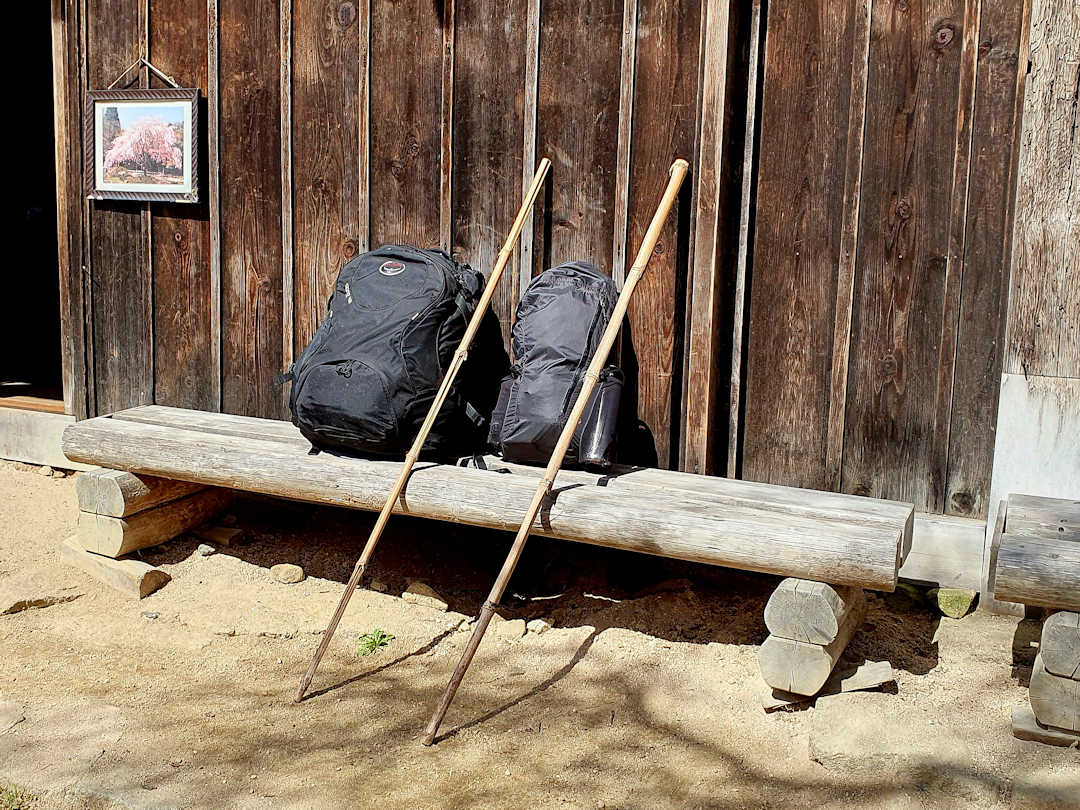
When hiking the Nakasendo, you’ll want to pack as light as possible but still have all the essentials on you
Is there same-day luggage forwarding on the Nakasendo?
Yes, there is:
- Between Magome and Tsumago, a service is provided by the Tourism Offices of the two postal towns. You must drop off your luggage between 08:30 and 11:30 and collect it between 13:00 and 17:00. The drop-off/collection points are the Tourism Offices of either town. The service costs JPY1,000 per bag.
- Alternatively, there is a private luggage transfer service covering the Nakasendo between Nakatsugawa and Narai, operated by Nakasendo Luggage Transfer Service (NLTS). We have not personally used their service, but their Google reviews are very positive.
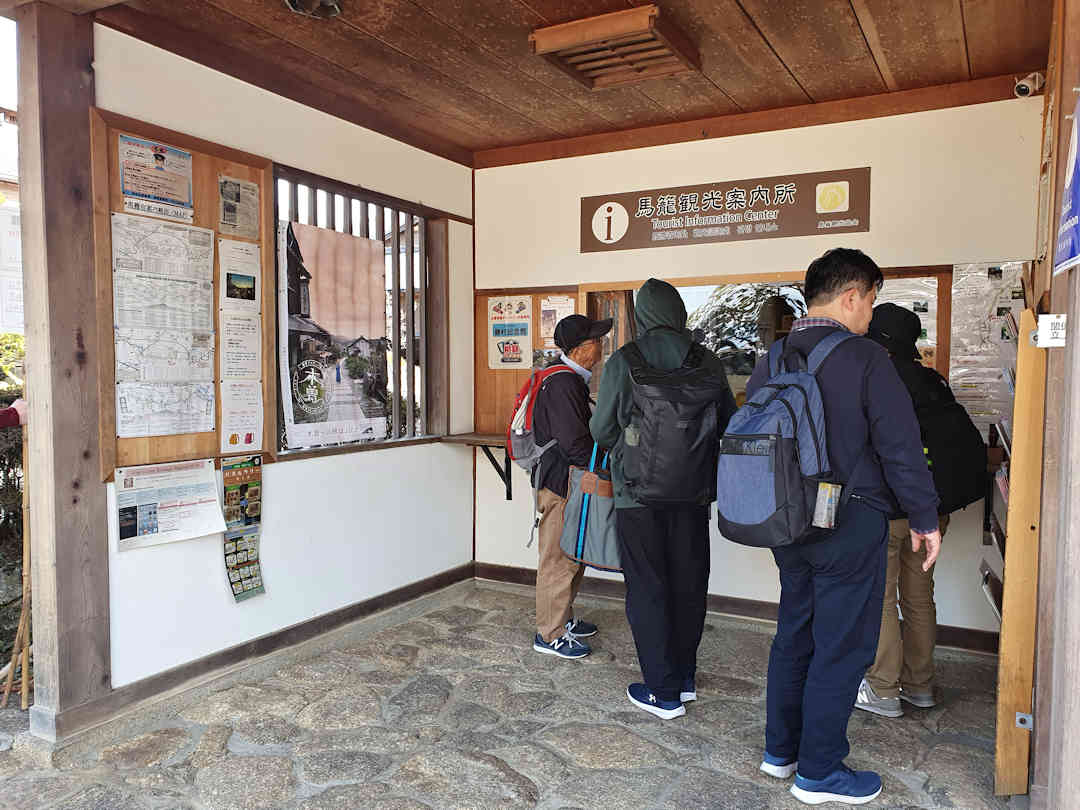
The local Tourist Information Centers provide same day luggage forwarding between Magome and Tsumago (in either direction)
What else should you know before hiking the Nakasendo?
Take plenty of cash as not all businesses (including accommodation providers and restaurants/cafés) accept credit cards.
If you’d like to use a hiking stick but don’t want to bring your own, you can borrow (wooden) hiking sticks.
- Magome [Google Maps location] and Tsumago [Google Maps location] are kept next to the Tourism Office in each town.
- Between Yabuhara and Narai (over the Torii Pass), holders by the trail heads are on either side of the mountain.
Just return them after your hike so the next hiker can use them.
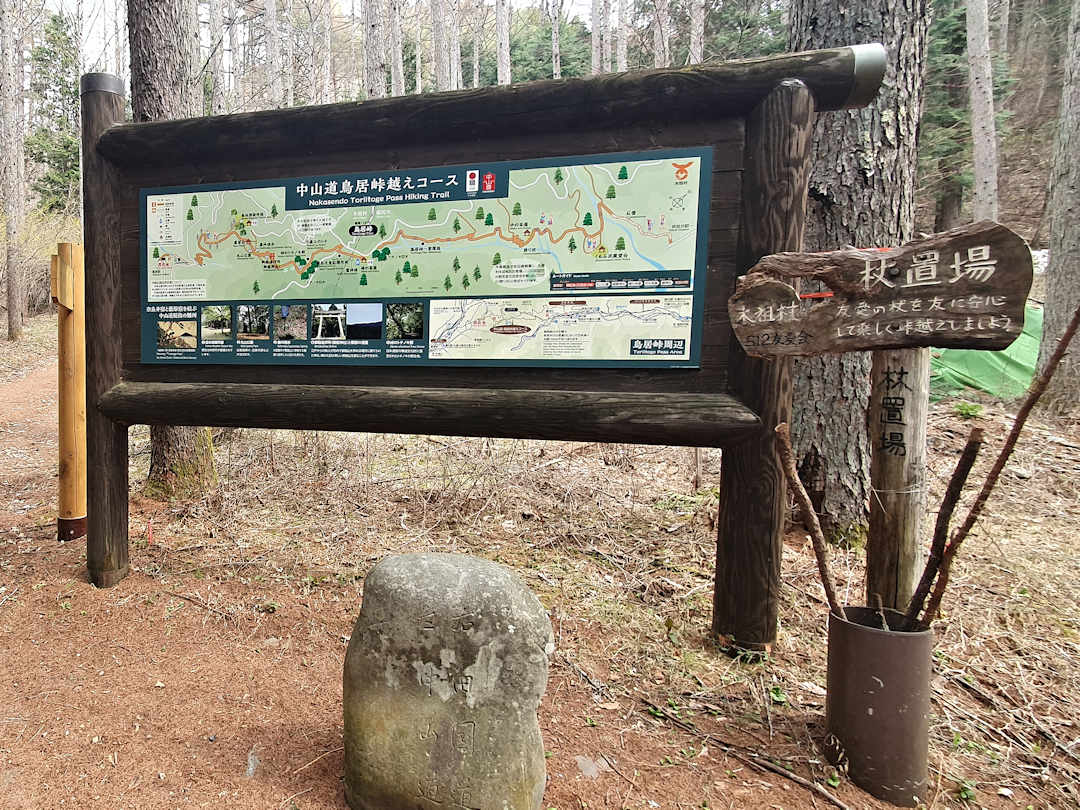
If you didn't bring your own, you can borrow (wooden) hiking sticks between Magome and Tsumago, and between Yabuhara and Narai
How to hike the Nakasendo safely?
- Do not attempt to hike in the dark.
- Apply sunscreen and wear a head covering (and, in summer, insect repellent), especially on sunny days.
- While not as many as on the Kumano Kodo, some sections on the Nakasendo comprise moss-covered stones or wooden planks, which can get slippery even when not wet. Take your time and watch your steps, especially on downhill sections.
- Bear encounters are possible but not frequent. Carry a bear bell if you wish (we didn't and are still alive).
- You may encounter Japanese macaques (especially if you don't scare them off with bear bells). If you do, be quiet and observe them from a distance. It's a magical experience (we had the pleasure twice).
As for (other potentially dangerous) animals, be aware of
- the venomous Mamushi snake, a small pit viper 50-80cm long (if you get bitten, call 119, the local emergency helpline, immediately);
- the Mukade, a scary-looking giant black centipede with orange legs whose bite can be very painful and
- The Suzumebachi is a giant hornet with a nasty sting. The hornets are most aggressive during mating season (September/October). Wear light-coloured clothing with long sleeves/pants, and avoid perfume. If you encounter one, leave it alone - don't try to get closer to take a (better) picture. If you encounter a hornet's nest, move away slowly and quietly - never run away, scream or hit around like a maniac (that will make them more aggressive). If you get stung, cleanse the sting with running water, squeeze out the poison and take some antihistamines. If you have a severe allergic reaction or multiple bites, call 119 immediately.
Hiking the Nakasendo in the summer can be a wonderful experience, but always prioritize your safety. If there's a typhoon warning, please choose to postpone your hike. Your well-being is far more important than a summer adventure! Typhoons bring very strong winds that can down trees and high rainfalls that can cause flash flooding and landslides. Check the weather forecast daily before and during the hike.
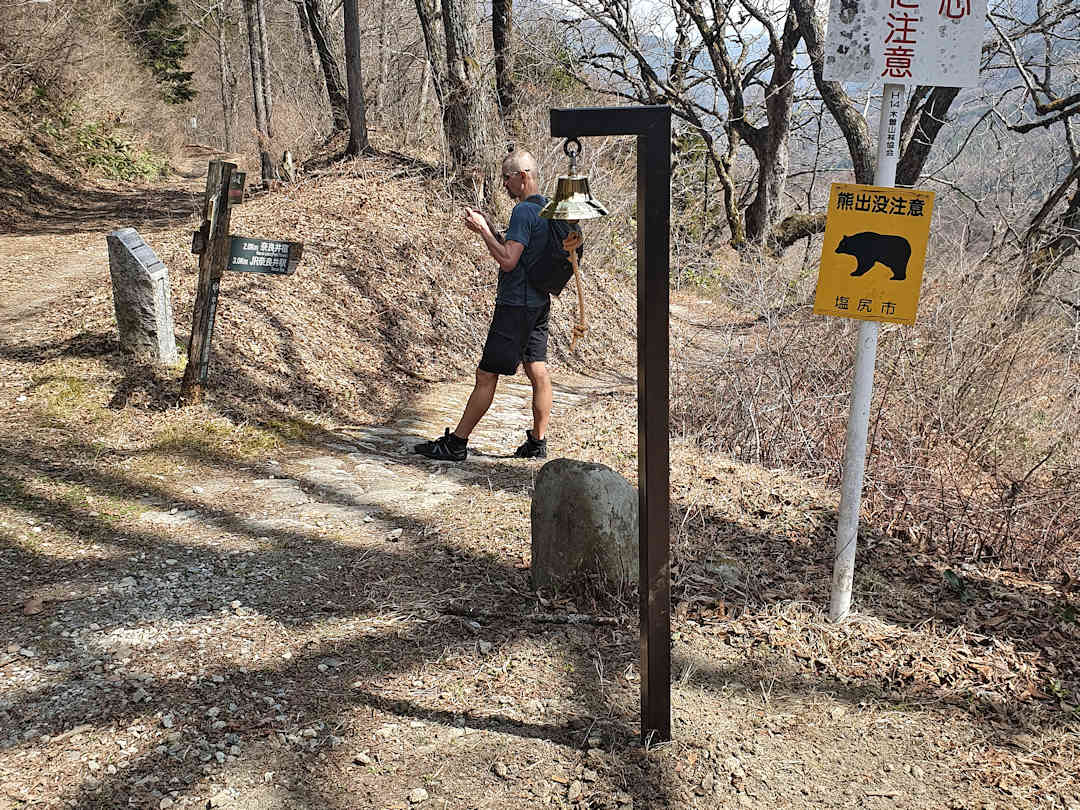
Bear encounters are possible on the Nakasendo but not common
Where to find more information about the Nakasendo?
Each of the postal towns featured in our itineraries has a Tourism Association / Office:
with brochures and staff eager to help – just pop in during opening hours. Here are just a few examples (also) available online:
If you have hiked the Nakasendo Trail, what was your experience like?
What was your experience? And if you are planning to hike the Nakasendo: What other questions do you have?
Before you go, if you liked our article and found it helpful, we would appreciate it if you could share it with your friends and family via the Share buttons below. Even better: Leave a short review on Trustpilot or Google, which would help us further build our online reputation as a (trustworthy and helpful) travel and lifestyle blog.

